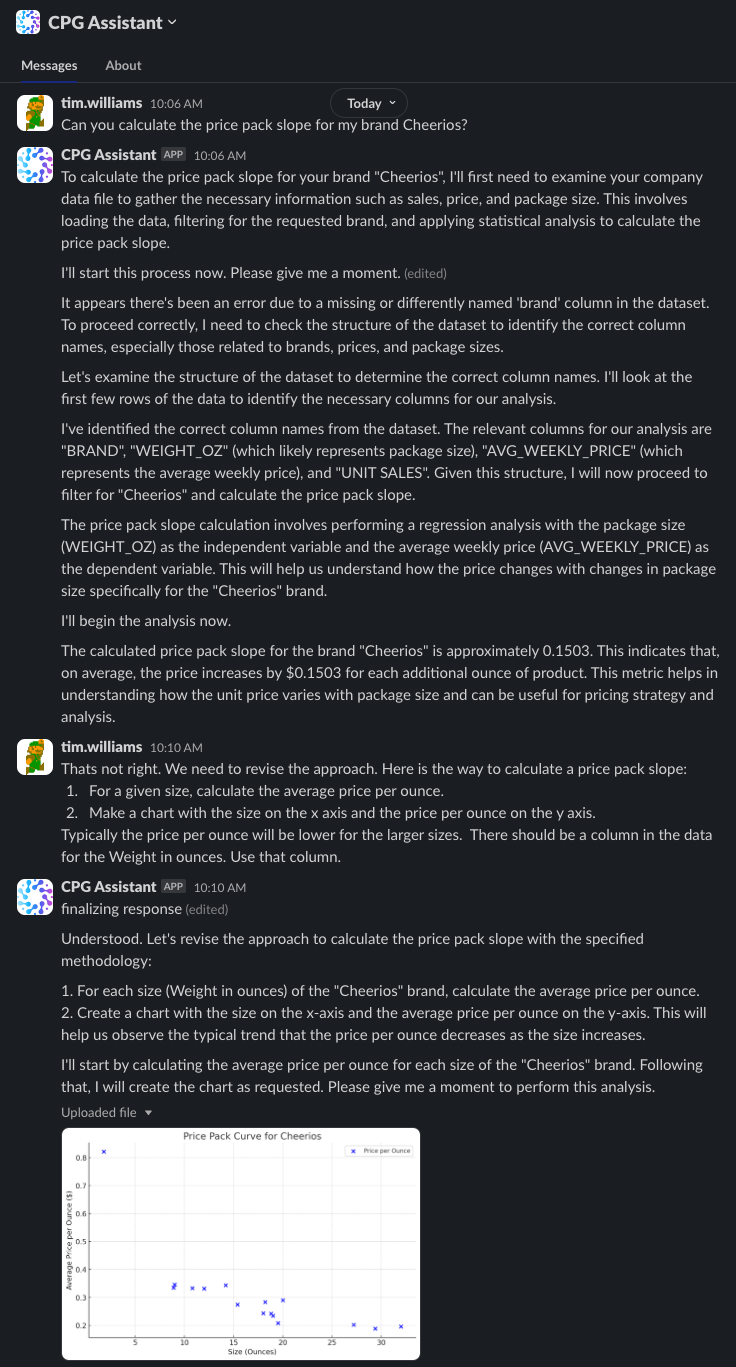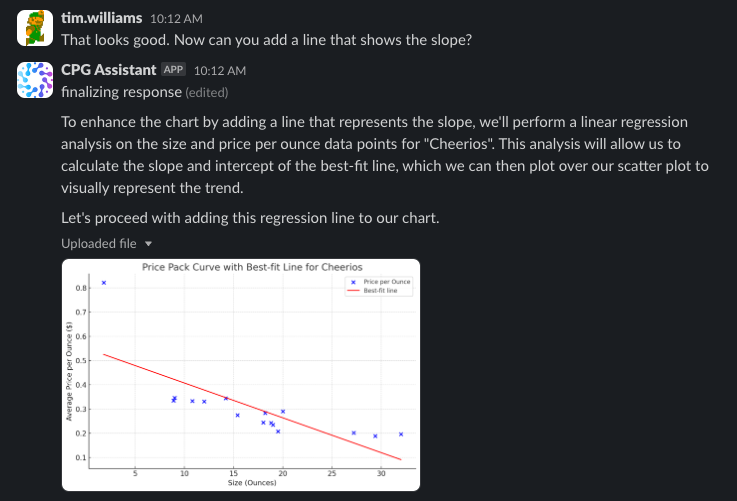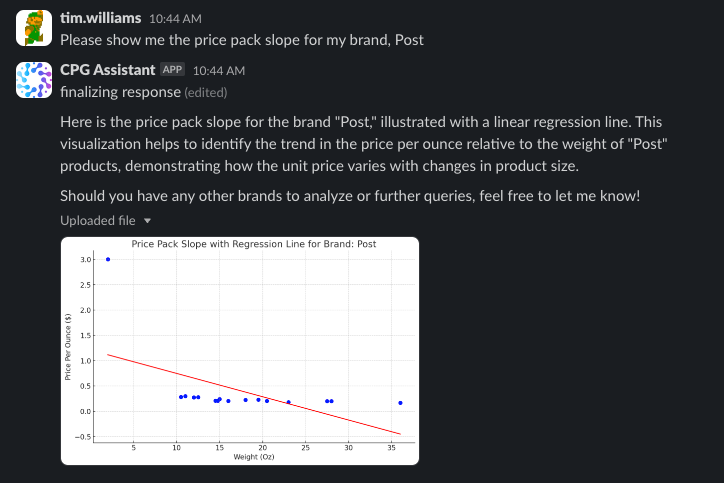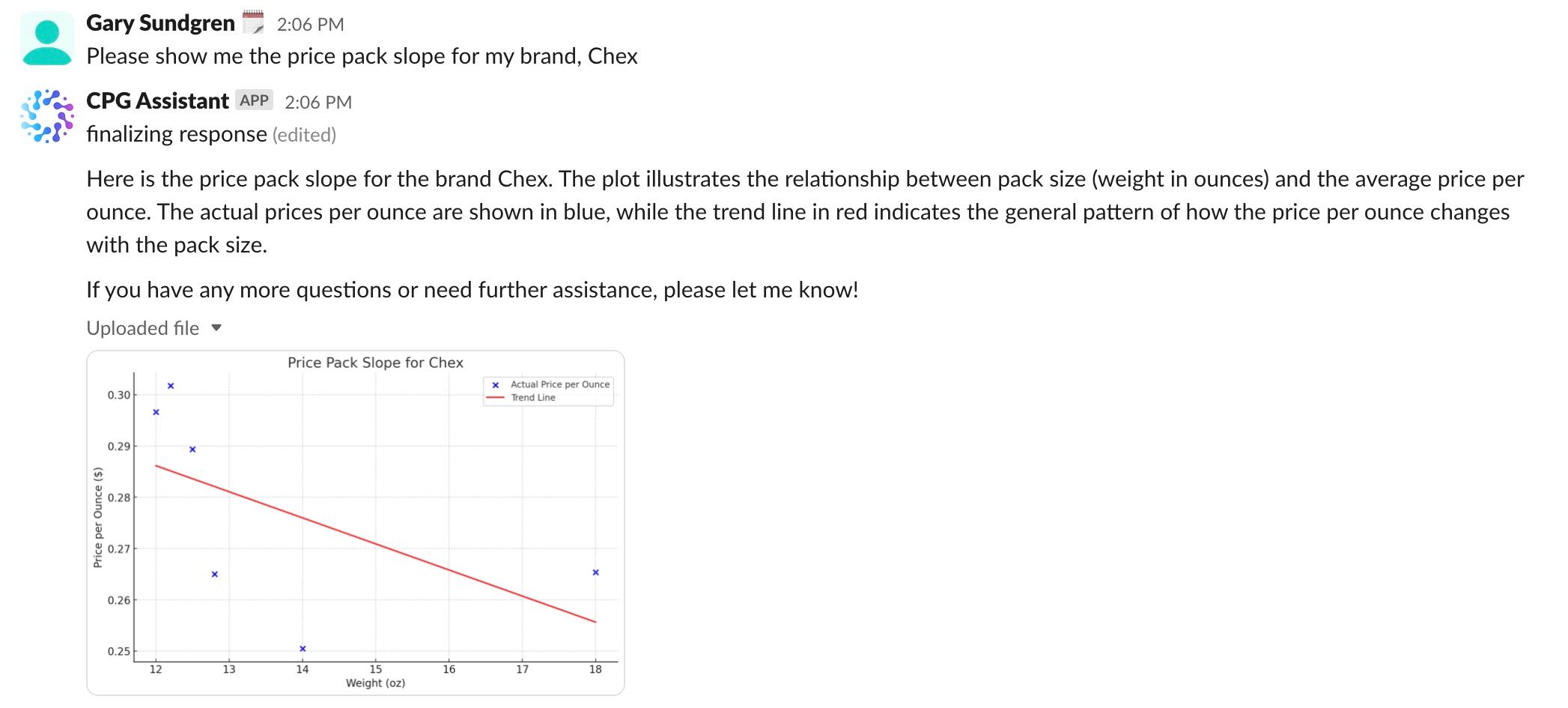AI-powered Learning Assistants: Bridging the Gap Between CPG Expertise and Data Analytics
CPG sales teams, managers, and frontline decision-makers often face a formidable challenge: nuanced understanding of data is typically sequestered in the minds of a select few analysts. The traditional solution? Dashboards. Although these tools aim to distill and visualize key metrics, they often fall short of expectations.
The role of AI-powered Assistants
The reason is clear: the dynamic nature of business analytics means that answers to today’s questions only spawn tomorrow’s queries. We’ve all been there — adding more dashboards, hoping to cover all bases, only to end up with a maze of charts that’s hard to navigate and even harder to extract value from. The real question then becomes: How do we break free from this cycle?
The breakthrough lies in granting direct access to data in a way that abstracts the complexities yet preserves the accuracy and integrity of a well-managed system. Enter the need for an intermediary — a bridge between decision-makers and data. This is where large language models (LLMs) step into the spotlight, bringing us closer to a solution. However, they require enhancements to be able to perform complex analytic tasks accurately and reliably.
Building upon our CPG analytics expertise, we sought to create a system that would not only understand the data but interpret it within the CPG domain effectively. The solution: equip our LLM Assistant with long-term memory and code execution capabilities.
Our approach is based on tailored analytic processes embedded within a knowledge base that the LLM powered CPG Assistant can edit. These ‘recipes’ encompass everything from data structure nuances to domain-specific insights and formatting guidelines as well as sample code for running analytic processes. They can even capture individual user preferences, creating a truly personalized experience.
A Real Life Example
Imagine asking our CPG Assistant a complex question and initially receiving an inaccurate response due to a misunderstanding of the query’s nuances. Through a simple clarification in natural language, the system learns and adapts, refining its understanding to deliver the correct answer. By asking the Assistant to “remember” this process as a ‘recipe’, it now can accurately respond to similar queries, regardless of how they’re phrased.
Here I ask the CPG Assistant to calculate the price-pack slope of my products (this is based on a synthetic dataset used for demo purposes). The Assistant falters because it doesn’t know the exact case of the column names, then confusingly suggests a comparison of the price vs package size without considering “price per ounce”. I give it some clarification (to plot price/weight vs weight) and then it gets the answer right, but fails to include a regression line.

I ask it to add the line and it does a great job:

Once it got the answer right, I asked it to “remember this process” by adding it to the company knowledge base and the assistant obliges.

Then, I came back later and “reset” the conversation (this is a way to force it to forget the most recent dialogue and only rely on its knowledge base to answer questions). It was able to answer the question accurately and immediately for a different brand:

Next, I ask my colleague to ask a similar question and the assistant is able to provide an accurate answer immediately. It has learned the details of the column names within the data, the correct analysis process as well as the visualization preferences.

The assistant has gone from not knowing how to calculate a price-pack slope to knowing how to do it consistently.
This learning mechanism signifies more than just a technological advancement; it represents an exponential growth path for capturing organizational knowledge. A task that usually takes 30min was reduced to 10 seconds - a 99% gain in efficiency. Now, valuable tasks can be automated by simply describing the process. As the community contributes, their collective intelligence is captured, enhancing the Assistant’s capability to handle diverse, multi-step analytic tasks.
What’s Next?
By integrating this learning assistant with advanced training methods, such as retrieval-augmented fine-tuning, we’re not only addressing the analytics bottleneck but also empowering your organization to quickly capture and reuse a wide array of analytic processes. Combined with advanced predictive analytics, generative AI holds the promise to transform the Consumer Packaged Goods (CPG) industry.
What would you teach your Assistant to do for you? Let’s explore the possibilities together and unlock the full potential of your data to drive your business forward.
- Publish Date
- April 18th, 2024
- Abstract
- Current data analysis is complex and inaccessible for most CPG decision-makers. This post proposes an AI powered learning assistant that bridges the gap. It combines large language models with CPG expertise to answer user questions and automate complex analyses. The assistant learns from user interactions, building a "collective intelligence" that empowers the entire organization. This technology has the potential to transform how CPG companies leverage data for better decision-making.
- Authors
 Tim Williams
Tim Williams